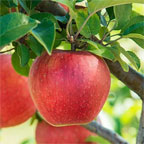- Q.Magnolia Flowers Turning Rust Colored - My Magnolia tree used to have beautiful flowers. Now the buds start beautiful, but before the flowers open, the tips ...
- Q.Magnolia Tree Bark Damage - We have a customer that has a nice magnolia tree that has been damaged by a beaver chewing on the ...
- Q.Transplanting Magnolias - There are 'volunteer' magnolia seedlings (2-3) feet tall growing under a larger magnolia. Any reason why they can't be transplanted? ...
- Q.Treatment Of Frozen Bay Magnolia Trees - My two bay magnolias are covered with ice and bent to the ground. Should I attempt to thaw them out before ...
- Q.Loss Of Tree Top - About two feet of the top of an eight-foot magnolia broke off from the weight of snow. How should I ...
- Q.Beneath A Shade Tree - I have a huge Magnolia tree in my backyard in Albany, NY. There is an area roughly 15 feet x ...
- Q.Magnolia Wada’s Memory - I was wondering what pests attacked my magnolia last year. The leaves were chewed and shredded, and as a result, ...
Q.Magnolia Flowers Turning Rust Colored
My Magnolia tree used to have beautiful flowers. Now the buds start beautiful, but before the flowers open, the tips turn a rust color and the buds never open. What is the solution? I water twice a week.
- A.
How have the temps been around bloom time? It sounds like they may be suffering from a bit of cold damage. Unfortunately, there is not much to be done for that.
If cold has not been a problem, make sure that when you are watering, you water deeply and at the perimeter of the canopy of the tree, not at the trunk.
Was this answer useful?00
Q.Magnolia Tree Bark Damage
We have a customer that has a nice magnolia tree that has been damaged by a beaver chewing on the tree. What is the recommended way to help protect the tree from further damage and help the tree heal?
- A.
As long as the tree is not girdled, you should leave it to heal on its own. The bigger problem is the beaver. They are notoriously hard to keep off a piece of property once they've decided that the land is part of their territory. To protect this tree, you may want to try placing some chain link fence around the trunk 3-4 feet high or try a product called Ro-Pel.
Was this answer useful?00 Q.Transplanting Magnolias
There are 'volunteer' magnolia seedlings (2-3) feet tall growing under a larger magnolia. Any reason why they can't be transplanted? I live in the Southeast.
- A.
There is no reason they cannot be transplanted. Because it is a magnolia, you may find that they are actually suckers. Even with these, as long as you make sure to dig up some roots when you take them out, they can be transplanted.
Was this answer useful?00 Q.Treatment of Frozen Bay Magnolia Trees
My two bay magnolias are covered with ice and bent to the ground. Should I attempt to thaw them out before they break? If so, will pouring water on them help or hinder the situation? Any advice will be appreciated. They have been in the ground just over two years.
- A.
I am sorry to hear about your plants. Removing the ice would be good, but do so only with cold water. Warm or hot water will kill them. If they are still alive, make sure that ice does not build up on them again.
Was this answer useful?00 Q.Loss of Tree Top
About two feet of the top of an eight-foot magnolia broke off from the weight of snow. How should I repair it, and will there be new growth at the top? There were no branches on the piece that broke off. The break was a split, not a snap off.
- A.
If the branch was completely severed, you cannot fix it. That branch will never grow as the "lead" branch again (which I am assuming it was) and grow upwards but others on the tree will take over for it and grow up. That being said, it will likely not grow as tall as it could have had the leab branch not broken.
Was this answer useful?00 Q.Beneath a Shade Tree
I have a huge Magnolia tree in my backyard in Albany, NY. There is an area roughly 15 feet x 15 feet under the tree where nothing will grow. There are no roots showing above ground, but I am sure they are there, just under the surface sucking out all of the nutrients and water. My question is: What on earth should I do with the space under the tree? Given all of the flower petals and leaves to clean up, I want something that is easy to clean up. Can I put down river rock or bark mulch and some large stones to make a rock garden of some sort? Is it okay to build up over the root area like that?
- A.
You have a few options. First, you could try planting something that does well under trees, like ivy or pachysandra. Or, you could go with the rock garden idea or mulch the area, as long as the rocks or mulch were not too deep. You could also consider building a deck under your tree.
I would not advise adding additional soil. This would cause stress on the tree roots and would not correct the problem anyway as the tree would still continue to use up all the water and nutrients in the area.
Was this answer useful?00 Q.Magnolia Wada’s Memory
I was wondering what pests attacked my magnolia last year. The leaves were chewed and shredded, and as a result, flower buds didn't form. I couldn't find the culprit no matter how hard I looked. Any ideas in case it strikes again?
- A.
This is going to sound very strange, but there is a possibility that it was snails. They are nocturnal and would have hidden in the deeper parts of the tree during the day, but they have been known to infest magnolias and chew up the young leaves and flower buds.
Was this answer useful?00



